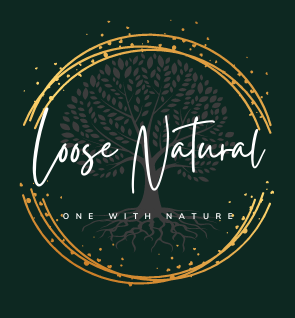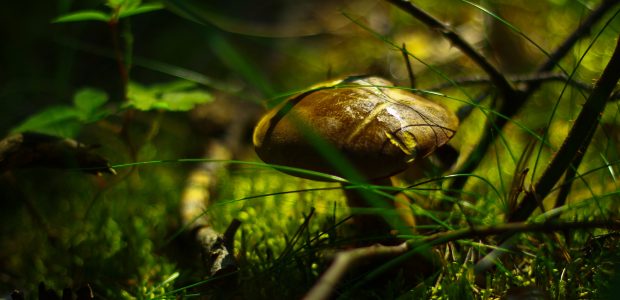
Welcome to the world of permaculture and food forests, where sustainable agriculture and ecological design intersect to create thriving and diverse edible landscapes. In this blog post, we will explore the principles of permaculture, the concept of food forests, and how you can design a productive food forest on your permaculture farm. Whether you’re a seasoned permaculturist or a beginner looking to learn more, this guide will provide valuable insights and practical tips to help you create a flourishing food forest. So let’s dive in!
- Understanding Permaculture: An Introduction to Sustainable Design Permaculture is an approach to agriculture and design that mimics natural ecosystems while integrating principles of sustainability. At its core, permaculture aims to create self-sufficient and regenerative systems that benefit both humans and the environment. By employing permaculture techniques on your farm, you can enhance biodiversity, conserve resources, and improve soil health. Emphasizing ethics such as care for the earth, care for people, and fair share, permaculture provides a framework for sustainable farming practices.
- Defining Permaculture: Principles and Ethics Permaculture is guided by three central principles: care for the earth, care for people, and fair share. These principles encourage practices that prioritize the health of the planet, promote social equity, and foster sharing and cooperation within communities.
- Benefits of Permaculture Farming: Environmental and Social Impacts Permaculture farming offers numerous benefits, including reduced water consumption, improved soil fertility, increased biodiversity, and the potential for local food production. Additionally, permaculture can foster community engagement, knowledge sharing, and the development of resilient and self-sufficient communities.
- Integrating Permaculture into Your Farming Practices Implementing permaculture techniques involves observing and analyzing your farm’s ecosystem, understanding the natural patterns and processes, and then designing and implementing systems that work in harmony with nature. Key practices include agroforestry, water management, soil conservation, and natural pest control.
- Unveiling the Concept of Food Forests Food forests are designed landscapes that mimic natural forests, combining trees, shrubs, vines, and groundcovers to create a diverse and productive ecosystem. By carefully selecting and arranging plant species, food forests can provide an abundance of edible crops, while also supporting beneficial insects, wildlife, and soil health.
- What is a Food Forest? A food forest is a multi-layered, perennial agricultural system that incorporates fruit and nut trees, shrubs, herbs, and other edible plants. It mimics the structure and functions of a natural forest, with different layers, such as a canopy, understory, and groundcover, each playing a vital role in the overall ecosystem.
- The Layers of a Food Forest: Canopy, Understory, and Groundcover The canopy layer consists of tall trees, providing shade, wind protection, and food sources like fruits and nuts. The understory layer includes smaller trees, shrubs, and vines that fill the gaps between canopy trees, providing additional food crops and attracting pollinators. The groundcover layer consists of low-growing plants that cover the soil, reducing erosion, suppressing weeds, and improving soil fertility.
- Mimicking Natural Ecosystems for Resilient Food Production By mimicking natural ecosystems, food forests create a self-sustaining and resilient agricultural system. By embracing the principles of succession, diversity, and ecological balance, food forests can thrive without the need for synthetic inputs, while providing a variety of nutritious and delicious food sources.
- Principles of Designing a Productive Food Forest Designing a productive food forest requires careful planning and consideration of various factors such as site conditions, plant selection, and long-term management strategies. By following these principles, you can create a thriving and productive food forest on your permaculture farm.
- Assessing Site Conditions: Sunlight, Soil, and Water Before establishing a food forest, assess your site for sunlight exposure, soil composition, and water availability. Different plant species have specific requirements, and understanding your site conditions will help you select suitable plants and optimize their growth.
- Selecting Suitable Plant Species: Natives, Guilds, and Companions Choose plant species that are well-suited to your climate, soil type, and available space. Native species are often a good choice as they are adapted to local conditions and provide habitat for local wildlife. Consider creating guilds, which are groups of plants that support and benefit each other through complementary characteristics and functions.
- Utilizing Succession Planning for Long-Term Productivity Plan for succession by selecting plants that mature at different times, ensuring a continuous supply of food throughout the seasons. Succession planning helps optimize space, light, and nutrient utilization, while also creating a dynamic and resilient food forest ecosystem.
- Creating Biodiversity and Ecological Harmony in Your Food Forest Biodiversity is a key aspect of a successful food forest. By promoting ecological harmony and attracting beneficial insects and wildlife, you can enhance pollination, pest control, and overall ecosystem health.
- Companion Planting: Maximizing Plant Health and Yields Companion planting involves strategically placing plants that have mutually beneficial relationships, such as attracting beneficial insects, improving soil health, or providing shade and support. By selecting compatible plant combinations, you can optimize plant health and overall food production.
- Attracting Beneficial Insects and Wildlife Encourage beneficial insects, birds, and other wildlife to your food forest by providing diverse habitats, such as birdhouses, insect hotels, and water sources. These organisms help control pests, pollinate flowers, and contribute to the overall balance of the ecosystem.
- Incorporating Aquatic Features and Ponds for Enhanced Ecosystem Services Integrating water features, such as ponds or swales, can provide additional benefits to your food forest. They help manage water runoff, improve soil moisture retention, and create aquatic habitats for beneficial organisms.
- Tips for Establishing and Maintaining a Successful Food Forest Establishing and maintaining a food forest requires ongoing care and attention. Consider the following tips to ensure the success of your food forest.
- Site Preparation: Clearing, Mulching, and Soil Improvement Prepare the site by removing any existing vegetation, weeds, or invasive species. Use organic mulch to suppress weed growth, retain soil moisture, and provide nutrients as it decomposes. Additionally, focus on soil improvement techniques, such as composting, adding organic matter, and implementing erosion control measures.
- Planting Techniques and Spacing Considerations Follow recommended planting techniques to ensure healthy root development and establishment. Proper spacing between plants allows for optimal growth and prevents overcrowding, facilitating better access to sunlight, water, and nutrients.
- Essential Maintenance Practices: Pruning, Weeding, and Harvesting Regularly prune your food forest to manage growth, improve airflow, and increase sunlight penetration. Control weeds manually or with organic mulches. Harvest ripe fruits, nuts, and other edibles regularly to encourage continued production and prevent over-ripening or spoilage.
Permaculture and food forests offer a holistic approach to sustainable agriculture, promoting biodiversity, food self-sufficiency, and ecological resilience. By implementing the principles of permaculture and carefully designing a productive food forest on your permaculture farm, you can create a regenerative landscape that provides abundant yields and a diverse array of nutritious foods. So roll up your sleeves, embrace the principles of permaculture, and embark on a journey to transform your landscape into a thriving food forest. Happy planting!


